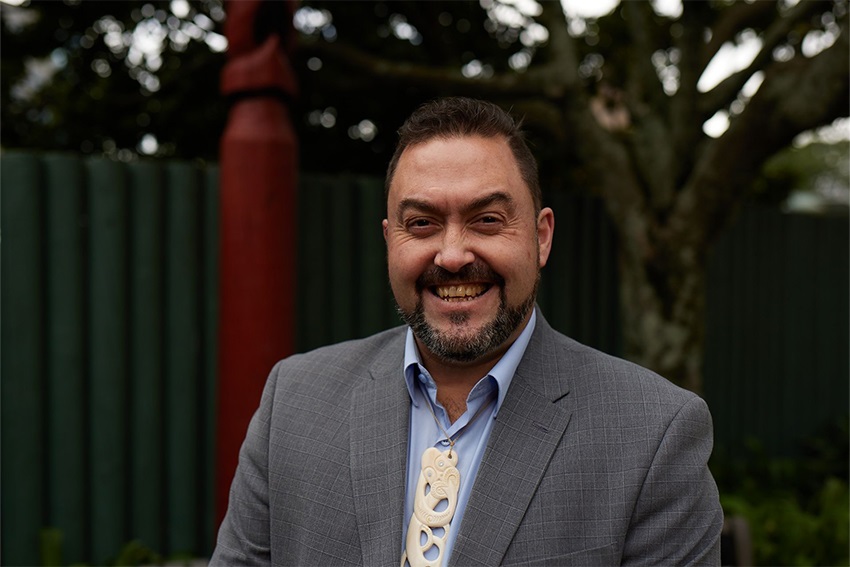Kiwis don't realise they're burnt out

Dr Ashley Bloomfield might recognise that it is time to step down from his role, but when it comes to job burnout, many Kiwis don’t have such insight.
That’s according to AUT Business School Professor Jarrod Haar (Ngāti Maniapoto, Ngāti Mahuta), who leads the iterative AUT Wellbeing@Work study.
Burnout has been discussed as a reason why Director-General of Health Dr Bloomfield and his two senior colleagues, Director of Public Health Caroline McElnay and Deputy Director of Public Health Niki Stefanogiannis, announced they were taking a break from their jobs.
Professor Haar says he applauds the officials for realising that, after more than two years of relentlessly leading the health response to Covid-19, they were simply exhausted.
But he says the latest data from his study of around 1000 workers in New Zealand show most people who are suffering from burnout either don’t realise it or can’t assess how serious it is.
Professor Haar’s survey includes a lay description of burnout, a condition characterised by high levels of four key factors: physical and emotional exhaustion, feeling cynical about your work, losing control of your emotions, and making cognitive errors (e.g., forgetting how to do things).
When analysed, the results can be segmented into three “zones”: Green (low to modest levels of job burnout), Orange (high burnout levels) and Red (severe burnout levels).
To gauge how well Kiwi workers understand their own risks of burnout, the survey asked respondents a simple question: How well does being burnt-out reflect you?
The answers reveal a stark gap between rates of, and self-awareness about, burnout.
The survey showed 35% of respondents had severe burnout (i.e., in the red zone) – but only four percent of respondents put themselves in that category.
In addition, even though 31% of respondents met the orange zone criteria (high burnout levels), one third of these respondents didn’t recognise this condition in themselves.
Indeed, many of these respondents thought they were “close to the red zone" when the calculation for scoring burnout showed they were in the red zone (severe burnout).
Perhaps most worryingly, some respondents who were experiencing high levels of burnout thought they were green (low to modest burnout levels).
Professor Haar says the findings highlight the challenges of self-diagnosing burnout. While some employees have good self-awareness and can identify when they have severe or high levels of job burnout, many lack such insight.
That means preventing burnout is a group effort.
"Knowing the signs of burnout is key to helping keep it at bay,” says Professor Haar. “If we can’t rely on ourselves, then co-workers, friends, family and whānau might be needed to keep an eye on our burnout levels. Indeed, we must encourage those who are clearly exhausted, emotional, and doubting the importance of their job to take the time they need to rest and recover.”
Professor Haar says the actions of Dr Bloomfield and his senior colleagues are powerful examples of leadership around wellbeing.
“Recognising when you have given enough – especially in high pressure jobs – is a good way to signal to other employees in the organisation that sometimes, stepping away is the best behaviour. I hope they all take time to recharge before exploring their next roles.”
Background analysis
To have a high burnt-out risk, respondents needed to score high in all four criteria
- Exhaustion: both physical and mental. Note: while a core factor, being “extremely exhausted “does not equal burnout.
- Mental distance: employees no longer consider what they do has any value or worth.
- Emotional impairment: being unable to control your emotions, such as showing up to work and crying.
- Cognitive impairment: being distracted and forgetful at work.
“Being burnt-out” scores [proportion of responses shown in brackets]:
- Red (high burnt-out risk) [35%]
- Orange [24%] – Professor Haar calls this the ‘smouldering’ category
- Green (average and low levels) [41%]
“Self-awareness of being burnt-out” scores
Respondents were asked to choose one of the four answers in response to the question “How well does being burnt-out reflect you?
- Yes, I could be burnt-out [4%]
- High on a few of these (but not all) [31%]
- Maybe, not quite burnt-out but getting close [15%]
- No, not reflective of how I feel [50%]